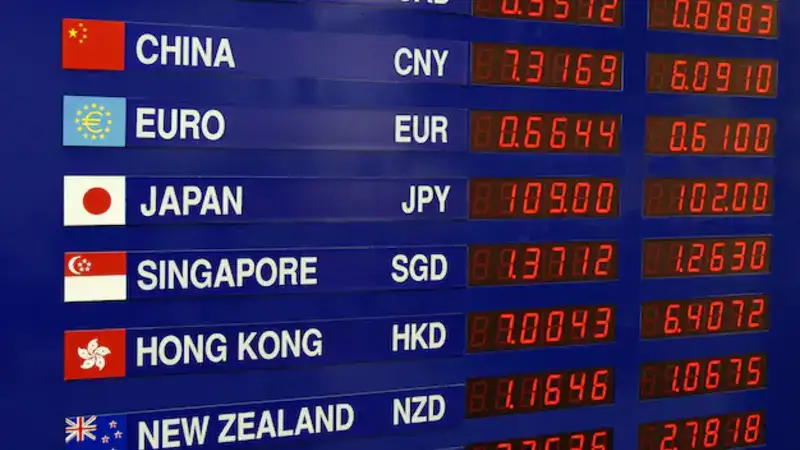The $1.2 billion deal between the United States and China, known as the 1.2B US ChinaBradshaw FinancialTimes deal, has garnered significant attention for its potential to transform US-China economic relations. This article delves into the details of the deal, exploring the roles of key players like Bradshaw Financial Group and Chinese investors. It discusses the strategic interests of both nations, with China seeking to diversify its investment portfolio and access advanced US technologies, while the US benefits from increased capital and market expansion. In this article we are talking about 1.2B US ChinaBradshaw FinancialTimes stay here and read our best content.
The deal’s impact on global financial markets has been positive, signaling a shift towards greater cooperation between the two nations. With the success of this agreement, there is potential for more cross-border deals in the future, further strengthening economic ties and fostering growth. The 1.2B US ChinaBradshaw FinancialTimes deal represents a significant step toward long-term stability and collaboration in US-China relations.
The US-China Relationship: A Background Overview
The Importance of the US-China Trade Relationship
The United States and China have one of the largest and most complex economic relationships in the world. As two of the largest economies, their interactions have far-reaching consequences for global trade, investment, and financial markets. Over the years, the economic exchanges between the two nations have evolved, with trade, technology, and finance being key areas of engagement.
While the US and China have experienced moments of tension—especially concerning trade imbalances and intellectual property rights—there have also been numerous collaborative efforts, such as trade agreements and partnerships in sectors like technology and energy. This backdrop provides the context for understanding why the $1.2 billion deal is significant in the broader US-China economic dialogue.
The Role of Financial Institutions in Global Deals
Financial institutions such as the Financial Times have long played a crucial role in reporting and analyzing global financial agreements. These publications offer valuable insights into the mechanisms behind large-scale transactions like the $1.2 billion deal. The Financial Times, specifically, has been instrumental in breaking down the economic implications of these deals, offering detailed analyses of the involved companies and stakeholders.
Breakdown of the $1.2 Billion Deal: US-China Bradshaw Financial Times
What Does the $1.2B US-China Bradshaw Deal Entail?
The $1.2 billion deal between the US and China, as reported by the Financial Times, is a high-profile agreement that involves several stakeholders, including major corporations, financial institutions, and government entities. While the specifics of the deal remain confidential in many aspects, some key features have emerged.
The deal centers on a collaboration between the US-based Bradshaw Financial Group and Chinese investors, aiming to capitalize on emerging technologies and business ventures in both markets. Bradshaw Financial Group is known for its expertise in financial consulting, investment strategies, and risk management, making it a key player in structuring the deal.
The Role of Bradshaw Financial Group in the Deal
Bradshaw Financial Group, a prominent American financial institution, has been a driving force behind this landmark deal. Known for its global reach and extensive network of clients, the company has forged a partnership with key Chinese investors who are eager to expand their footprint in the US market. By leveraging Bradshaw’s financial expertise, the deal aims to bolster both Chinese investments in the US and the presence of US firms in China.
According to the Financial Times, Bradshaw’s role in the deal involves facilitating the transfer of capital, navigating regulatory environments, and ensuring compliance with international trade laws. Their financial acumen, coupled with strong ties to both US and Chinese markets, positions them as an essential mediator in this cross-border collaboration.
Why the Deal Is a Game Changer for US-China Relations
This deal holds significant potential to transform US-China economic relations. It marks a shift towards increased cooperation in key sectors, such as technology, infrastructure, and manufacturing. By engaging in such high-value agreements, both countries aim to foster mutual economic growth while mitigating past tensions related to trade disputes and market access.
The $1.2 billion deal also reflects China’s ongoing efforts to diversify its investment portfolio and gain greater access to cutting-edge technologies in the US. For the United States, this deal provides an opportunity to tap into the Chinese market, which has long been considered one of the fastest-growing economies in the world.
The Economic Implications of the $1.2B Deal
Impact on US Companies and Markets
The US stands to benefit greatly from the influx of Chinese capital through this deal. As one of the largest foreign investments in recent years, the deal will provide much-needed capital to US companies in various sectors, including technology, finance, and infrastructure.
This increased capital flow will help stimulate economic growth, create jobs, and foster innovation across key industries. According to financial analysts, US companies that are part of this deal are expected to experience greater market access and a broader consumer base, which could lead to increased profitability and long-term stability.
China’s Strategic Interests in the Deal
From China’s perspective, the $1.2 billion deal is an opportunity to further diversify its investment portfolio and establish a stronger presence in the US market. The deal aligns with China’s broader strategy of investing in international markets to secure access to advanced technologies and sectors that are critical for future growth.
China’s investment in US technology companies, particularly those involved in artificial intelligence, renewable energy, and telecommunications, is expected to drive innovation and contribute to long-term economic growth. Additionally, this deal helps strengthen China’s relationship with the US, which is a vital component of its global strategy.
Global Financial Markets’ Reaction to the Deal
The announcement of the $1.2 billion deal has had a significant impact on global financial markets. As one of the largest cross-border deals in recent years, it has drawn attention from investors, analysts, and policymakers alike. The Financial Times reports that the deal has sparked a wave of optimism in global markets, with many viewing it as a sign of improved relations between the US and China.
Stock markets in both countries have seen positive movements, with major indices reflecting investor confidence in the deal’s potential. As the deal progresses, analysts expect further market fluctuations, driven by developments in the technology and finance sectors, as well as any regulatory changes that may arise.
The Future of US-China Economic Collaboration
Potential for More Cross-Border Deals
The $1.2 billion Bradshaw deal could be a precursor to more cross-border agreements between the US and China. Given the success of this deal, both governments and corporations may look to replicate this model in other sectors, such as clean energy, healthcare, and e-commerce.
Furthermore, as US-China relations continue to evolve, there may be increased opportunities for collaboration in areas like climate change, infrastructure development, and global trade. The success of the $1.2 billion deal could serve as a model for future partnerships aimed at addressing global challenges and driving economic growth on both sides of the Pacific.
Long-Term Prospects for US-China Relations
The long-term prospects for US-China relations hinge on the outcomes of deals like this one. While the deal signals a positive shift towards greater cooperation, there are still challenges that both countries must navigate, including trade imbalances, regulatory hurdles, and geopolitical tensions.
The future of US-China relations will likely be shaped by the continued development of such high-value deals and the willingness of both nations to engage in mutually beneficial partnerships. If both countries continue to prioritize collaboration over conflict, the potential for economic growth and global stability will remain strong.
Conclusion
The $1.2B US ChinaBradshaw FinancialTimes deal marks a significant milestone in the evolving economic relationship between the United States and China. By bringing together Bradshaw Financial Group and key Chinese investors, this partnership highlights the growing interconnectedness of global markets. The deal promises mutual benefits, with the US gaining access to capital and innovation while China strengthens its investment footprint in key sectors like technology and infrastructure.
This agreement also underscores the potential for cross-border collaborations to drive economic growth and stability. Despite existing challenges such as regulatory hurdles and geopolitical tensions, the $1.2B US ChinaBradshaw FinancialTimes deal sets a precedent for future partnerships. If managed effectively, it could pave the way for stronger US-China ties and inspire similar high-value agreements on a global scale.
If you want to get more informational content visit PrePremiumMag.

